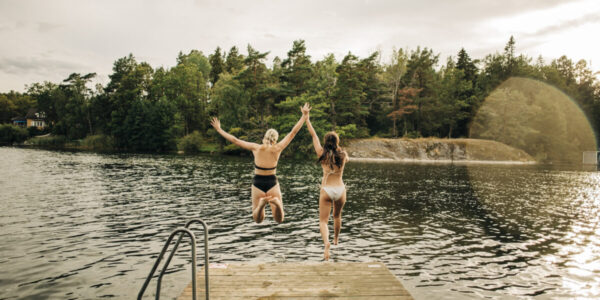
Two Sisters Transformed Their Family Vineyard into the Home of Their Dreams
A second-generation vintner and her half-sister, both interior designers, put their heads together to build a home on a Napa vineyard with deep, sentimental roots—and views for days.
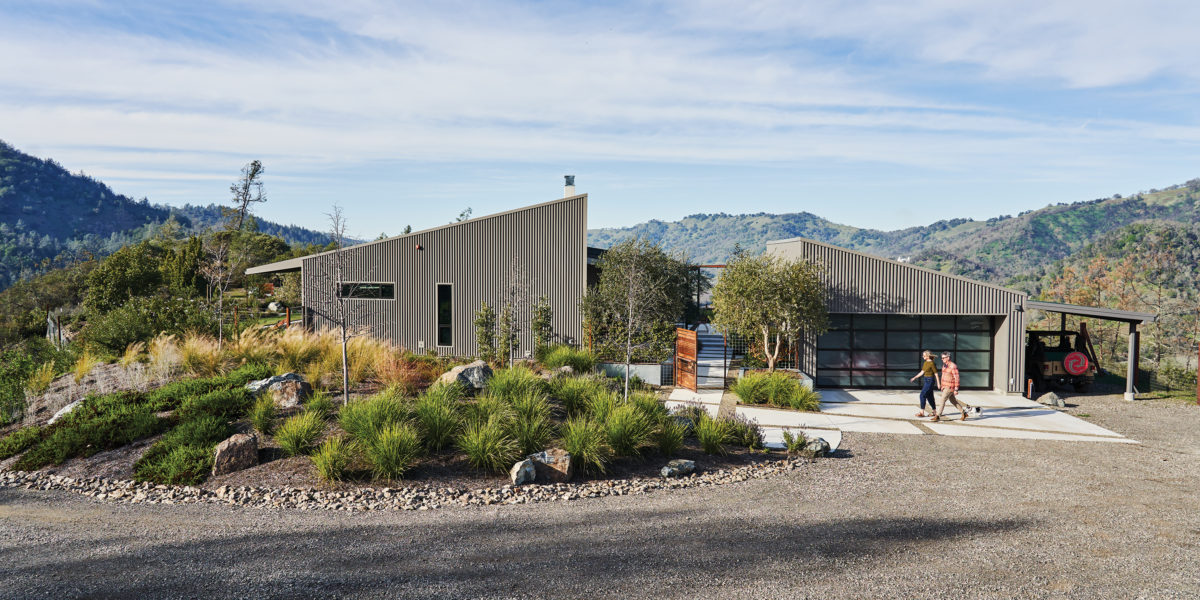
Thomas J. Story
It didn’t take long for Tobin Heminway and her father, Jay, to choose the perfect spot on their land near St. Helena for a new two-bedroom ranch house.
They’d memorized the contours and viewpoints of the 200-acre property in the Chiles Valley near Lake Hennessey, 31 of which are planted to vine, when the two of them explored the land together on his motorcycle during her childhood weekend visits.
“My parents split up when I was five,” Heminway remembers. “They went together to Italy when my father was there as a Fulbright scholar, and they came home separately. I grew up in Berkeley and came up to St. Helena on the weekends and summer vacations, back in the 1970s when it was only a small town with a bunch of feed and seed stores and Keller’s market.”
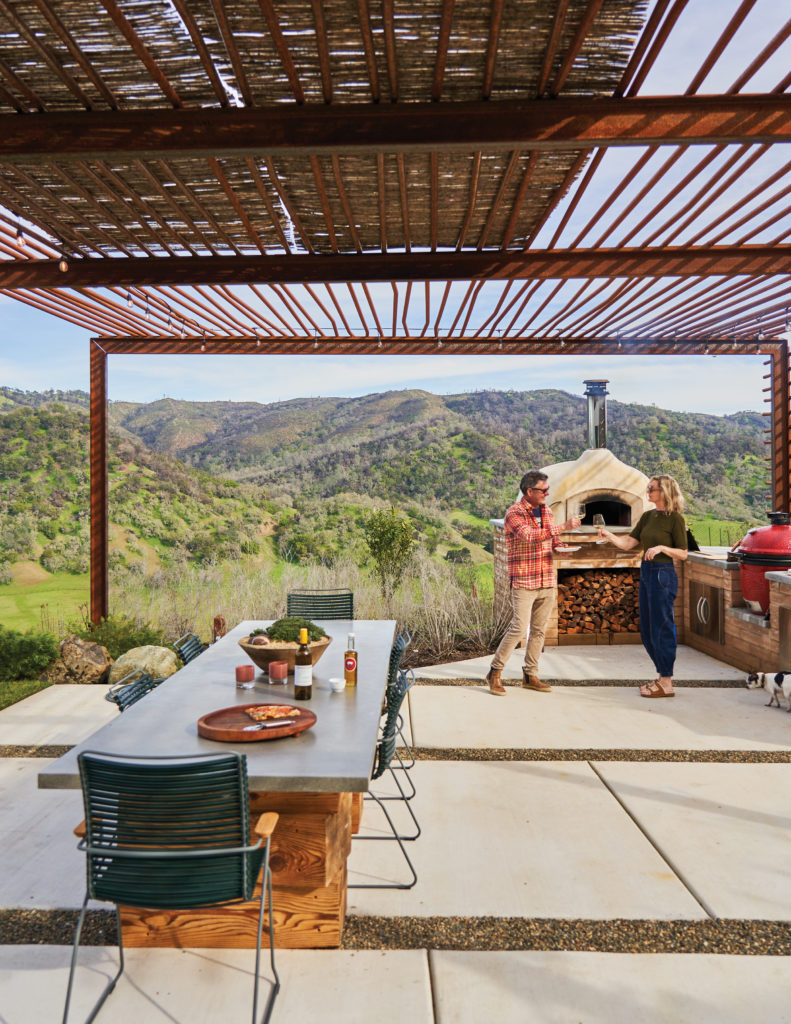
Thomas J. Story
In 1969, Jay left his post as a sculpture professor at the University of California, Berkeley, and bought the hardscrabble property, joining the nascent back-to-the-land movement brewing among his peers. He lived in a ramshackle former hunting lodge that was the only standing structure on the land, where his wife, Pam, still resides.
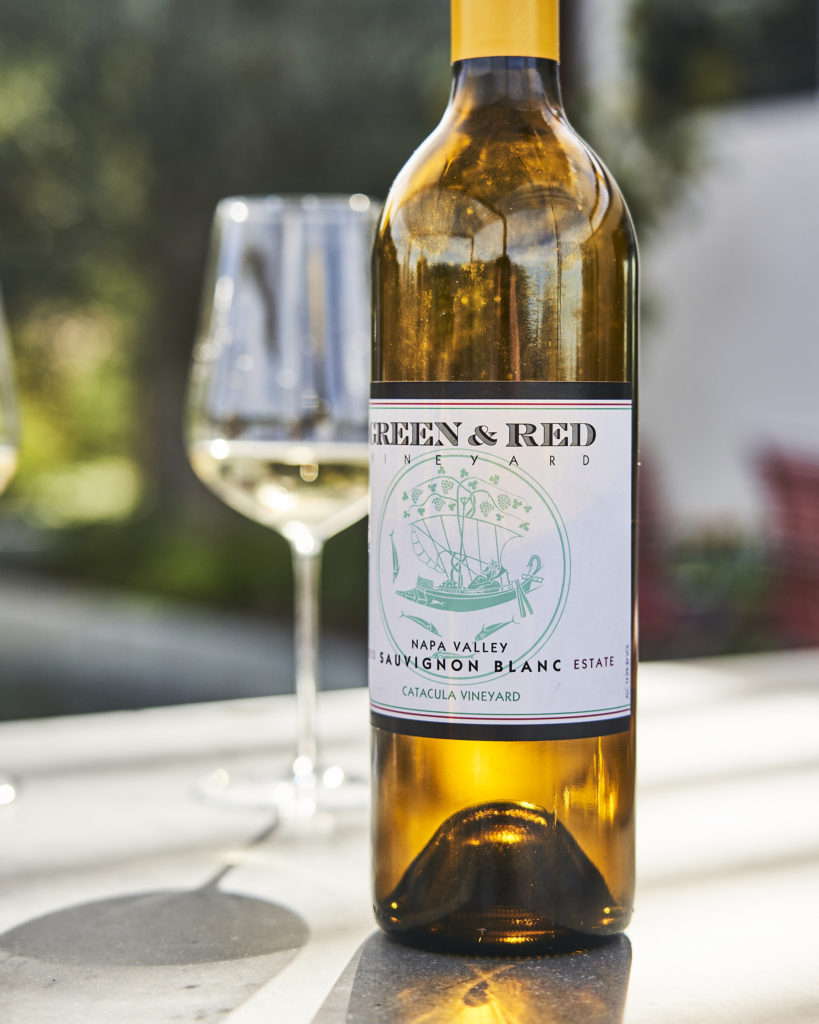
That home is closer, in distance and style, to the rustic tasting room and cellars where the family ages their wine. Longtime friend, chef Alice Waters, still serves a bright and lively Green & Red Zinfandel as the house wine at her famed restaurant Chez Panisse, though the label is a relatively unsung hero among increasingly flashy Napa Valley brands. You may not have heard of Green & Red, but chances are you know the wineries like Turley and Scribe that buy their grapes, some produced by 100-year-old Rancho Catacula vines.
“My dad didn’t come here with the idea that he’d plant grapes, but he found those old vines and then started slowly,” Heminway says. She was by her father’s side hand-corking their first public vintage, made with a basket press, in 1977.
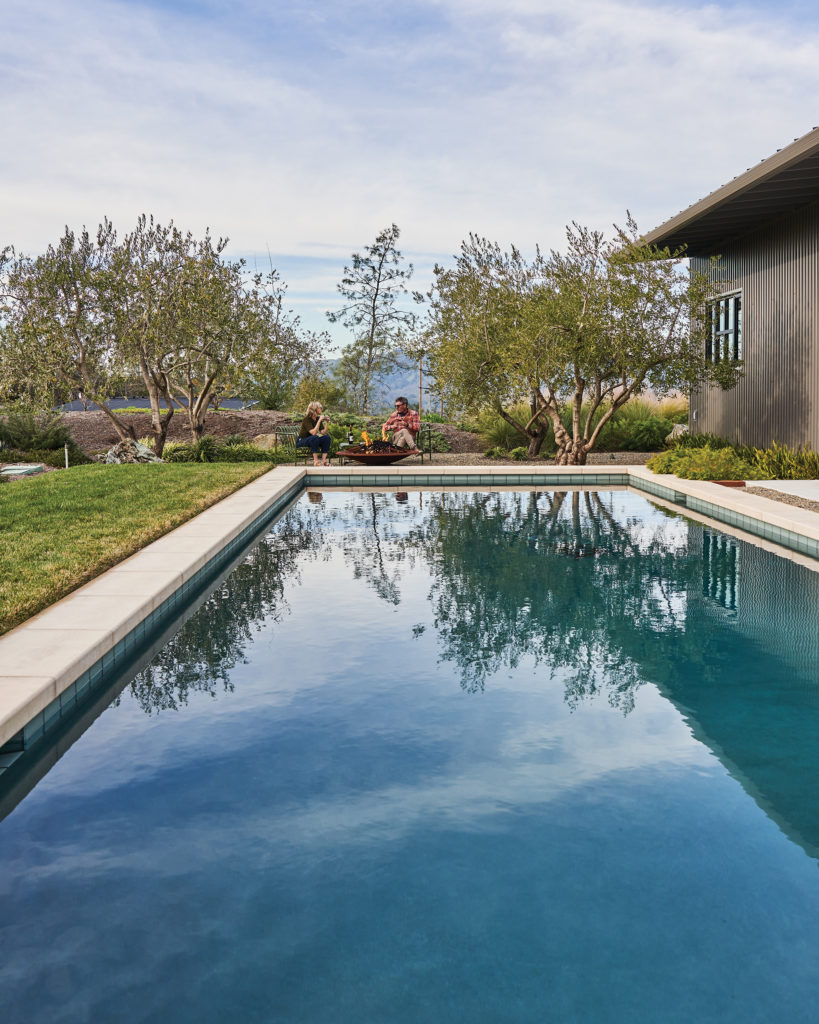
Tobin Heminway and her husband Ray Hannigan transplanted olive trees from her father’s house down the hill, adding a familiar touch to their new home.
Thomas J. Story
Decades later, Heminway and her husband Ray Hannigan uprooted their New York lives and careers (she is a former film producer turned interior designer; he is a real-estate lawyer) to head West to work side by side with Jay, who was nearing retirement and struggling with some health issues. For years, Hannigan and Heminway had been coming out for two weeks of the annual harvest to observe and take copious notes. The plan was to complete their education, learning the nuances of grape growing and wine-making full-time, and step into the shoes that Heminway, her father’s only child, knew she would fill one day. Building that two-bedroom ranch house for the couple, with a guest room for their adult daughter, a garden, and an outdoor kitchen built for entertaining, was a critical step toward making that long-held dream a reality.
“We built on the spot where my dad and I used to camp,” she says. “It’s a flat pad at the top of a hill. We’d hike up here and pitch a tent, and stay up late to watch shooting stars.”
Heminway’s dream was to build a romantic, Cliff May-inspired single-story home with a courtyard and a vine-covered pergola, like the ones she admired as a child growing up in the Bay Area. “We were living in a loft in Manhattan, and we wanted a funky California ranch. But my dad said, ‘No way. You’d be crazy to build a wood house up here,’” she says. “He was worried about fire. And he was right.”
Heminway and Hannigan enlisted the local architecture firm ChandlerWorkshop to design a modern steel, glass, and stucco home that has the spirit of a heritage ranch house, just made with more durable, practical materials.
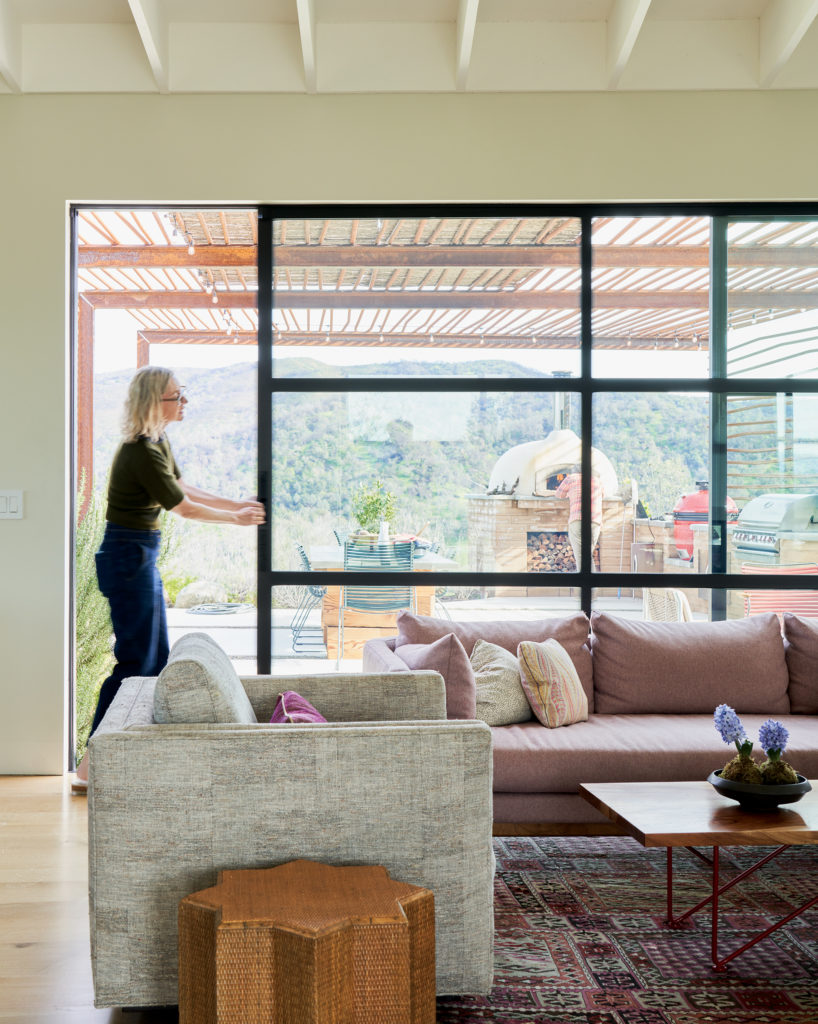
In the living room, the sisters paired a DWR rose sofa with a flat-weave kilim rug. The coffee table is by Garza Marfa, and the rattan-wrapped vintage side tables are from Pat McGann in Los Angeles.
Thomas J. Story
To hear Heminway tell the story of what happened next, that decision was the last easy one she would make for some time. Her father died suddenly in 2019. The house was unfinished, and it was well before anyone was ready to take over the business. Enlisting the help of her younger half-sister, Taylor Jacobson, a Los Angeles-based interior designer with a long list of local resources and contacts, had always been part of the plan, though the scope of her involvement grew. Jacobson stepped in to take over the project while Heminway and Hannigan handled the wine business.
“We had to dive right into the 2019 harvest, which was massive,” Heminway says. “I needed her, and she was there. That’s the blessing of a sister relationship. I’ve seen her career take off and how it’s developed. I knew that she understood what we wanted. And we communicated so well. It’s been amazing for our relationship.”
Jacobson, who had visited the property a few times as a teenager, understood the brief completely. She incorporated some feminine touches, like a pink DWR sofa with a vintage kilim rug in the living area, and a powder room covered in a discontinued Hermès wallpaper, to add some warmth and charm to the angular house. “I knew it would be really fun to collaborate with Tobin, choosing paint colors, tile, lighting, and fixtures,” says Jacobson.
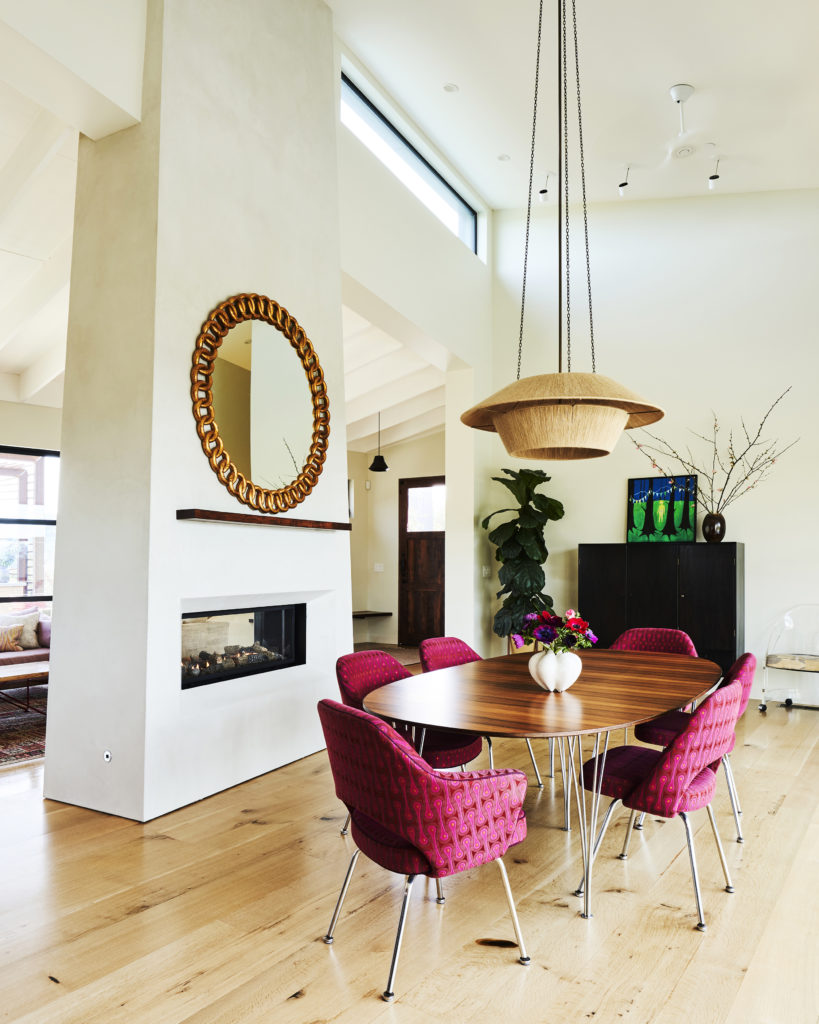
Vintage Saarinen chairs surround a rosewood dining table with metal inlay. The overhead pendant is by Nickey Kehoe.
Thomas J. Story
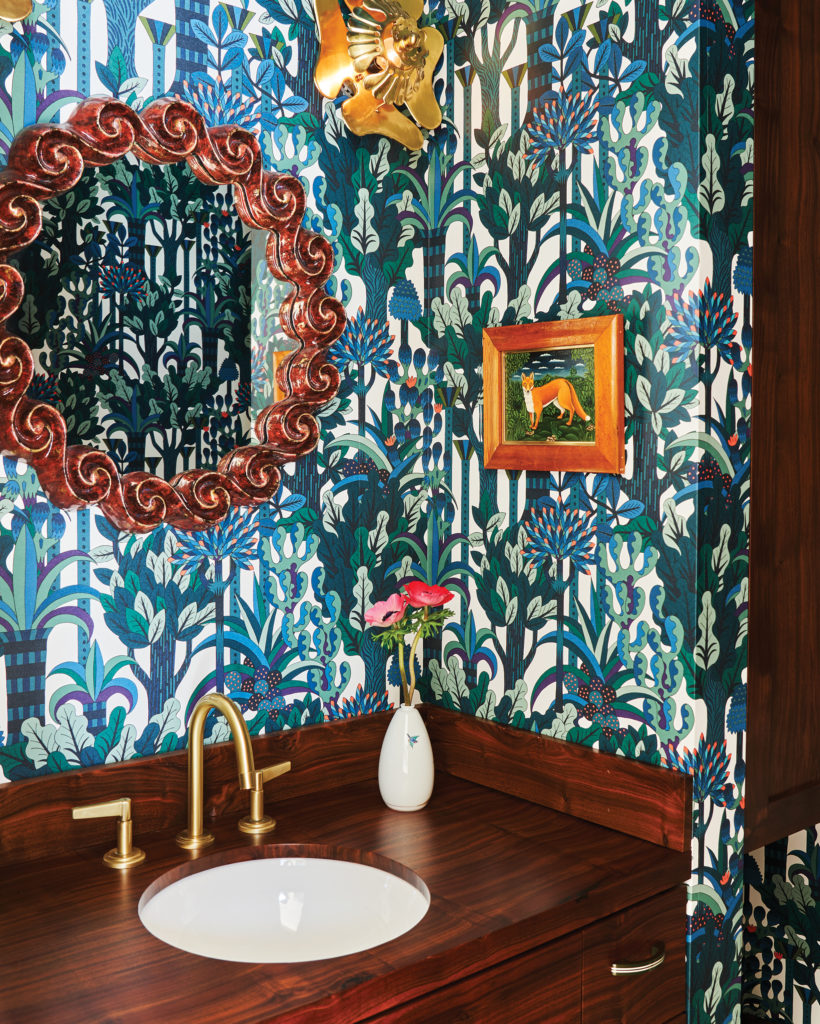
In the powder room, discontinued Hermès wallpaper adds a playful touch to a vintage mirror and brass sconces.
Thomas J. Story
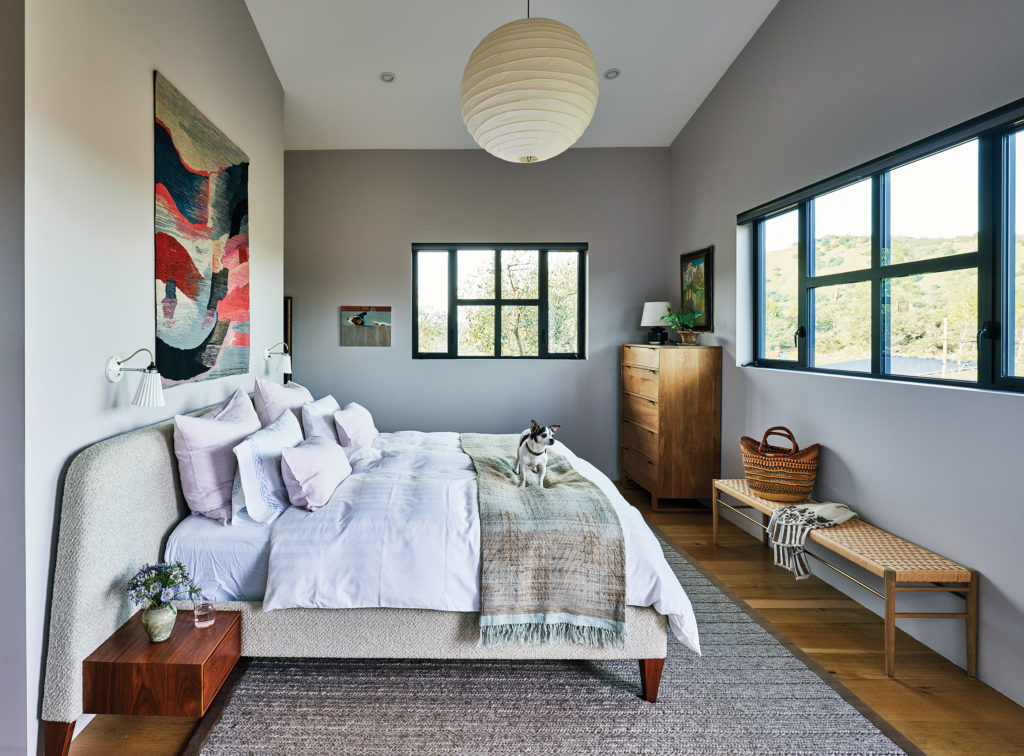
A Noguchi lantern hangs in the primary bedroom alongside a vintage 1970s Swedish tapestry. The custom headboard and nightstands are by Chad Peterson. A McGhee & Co. bench and Unison Home dresser complete the look, as does Uno the dog.
Thomas J. Story
Because of their 11-year age difference, the two weren’t very close growing up. Decorating a house was a long-delayed bonding experience for them. “I knew this California design world better than Tobin did, and we worked together to incorporate some of their furniture from the New York apartment and make it work for their new life,” Jacobson says.
The well-considered kitchen was a gift to Hannigan, a skilled amateur chef, who got the built-in pasta-making station of his dreams, with racks of rolling pins displayed proudly on the wall above it. It was his idea to order the wine-colored BlueStar range with green knobs as an homage to their legacy and surroundings.
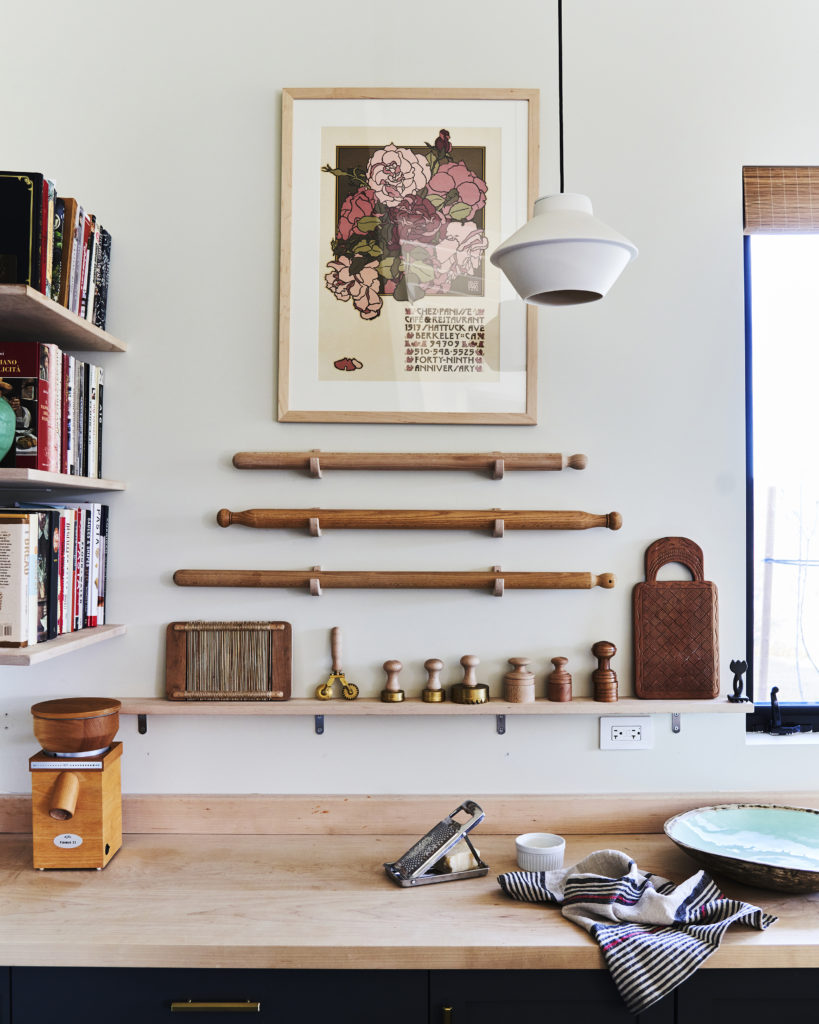
Thomas J. Story
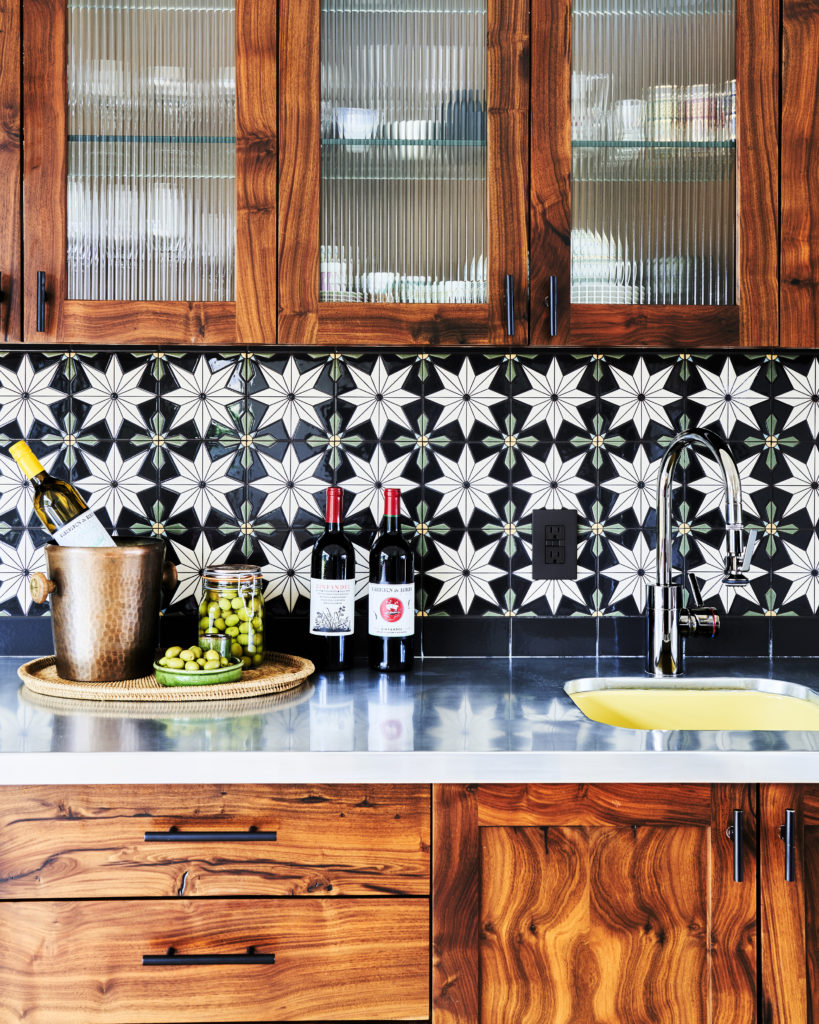
Thomas J. Story
Of all of the special custom details, the hand-milled and hyper-local black walnut accents stand out.
“A huge tree came down at my dad’s house,” Heminway says. “He had this plan to use the wood for cabinetry, the bar, the front door, and our mantels. That tree was so giving. To me, the wood makes it feel like my father’s here with us.”
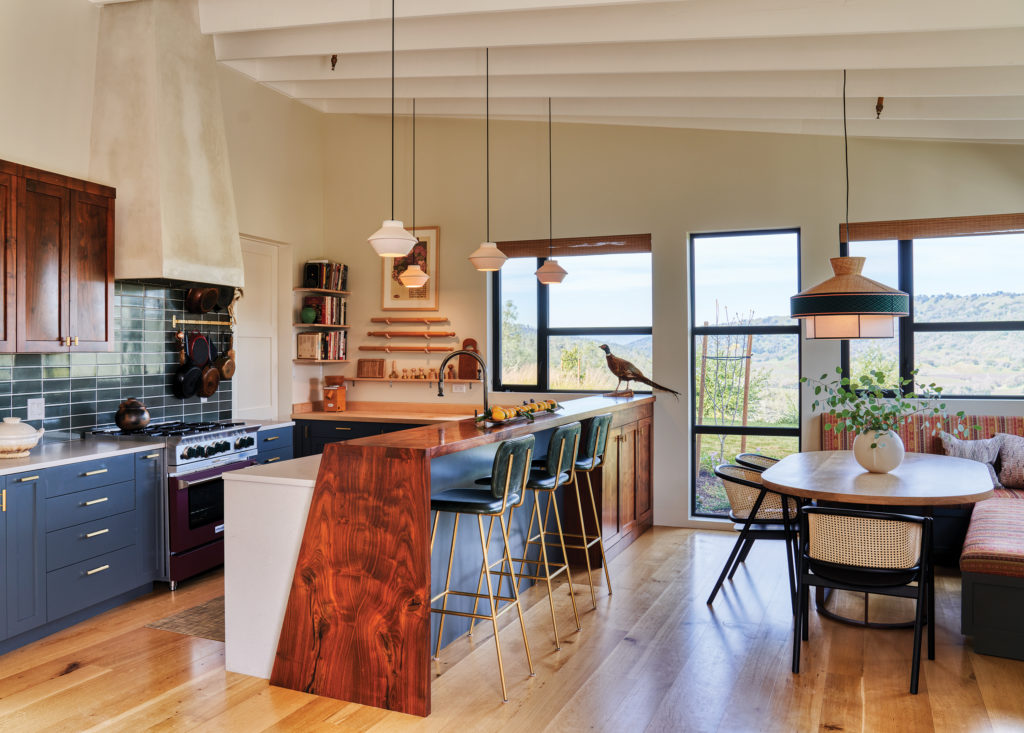
Thomas J. Story
Outside, a kitchen is outfitted with a pizza oven, a gas grill, and a Big Green Egg charcoal cooker. There’s a sizable pool with plenty of seating. Because the soil on the hilltop isn’t suited to grow much, multiple large containers planted with trees, shrubs, and herbs create a feeling of lushness.
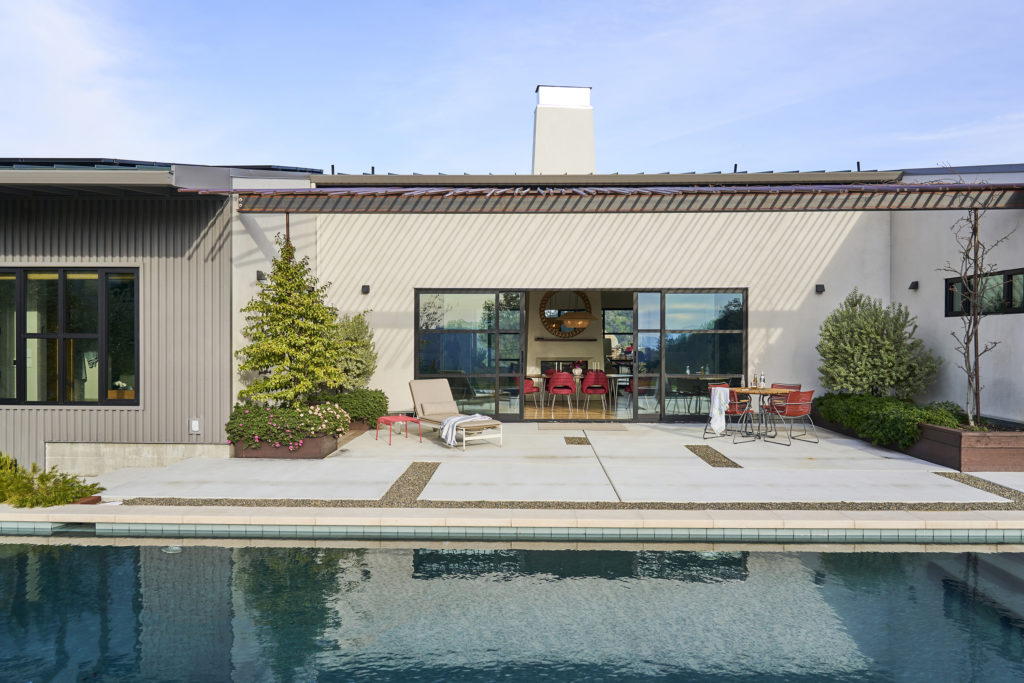
Thomas J. Story
A fire bowl designed by Heminway’s longtime friend, artist Elena Colombo, doubles as a garden sculpture even when it’s unlit. And small conversation areas with outdoor furniture from Hay dot the property. The real star of the show is the 360-degree view.
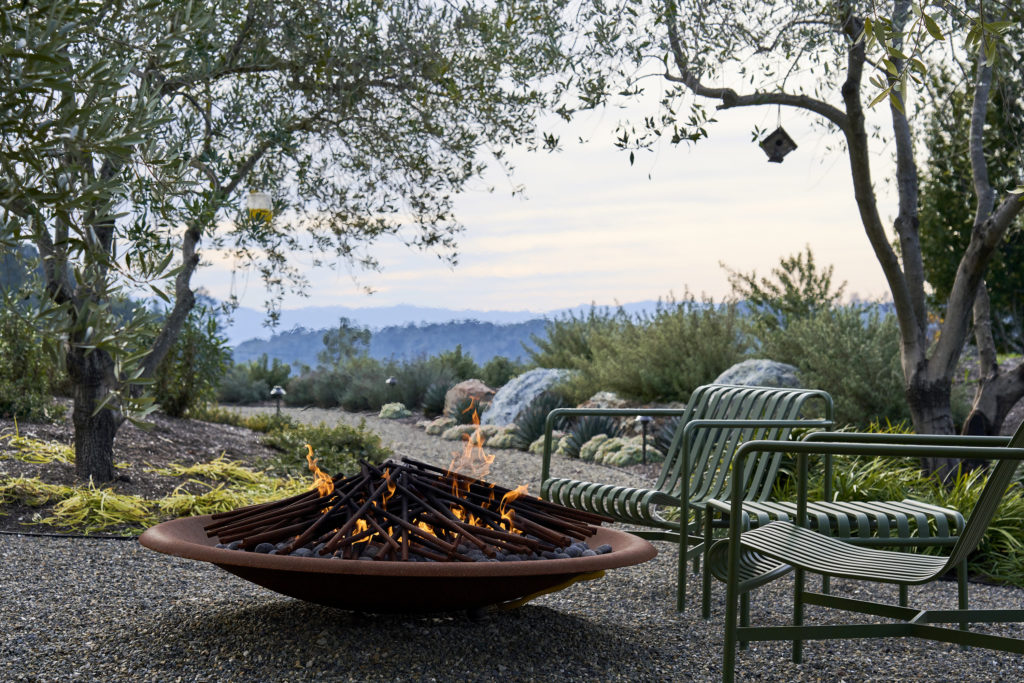
Heminway’s longtime friend, artist Elena Colombo, designed a fire bowl that doubles as a garden sculpture, offering cozy vibes for sipping a glass of wine next to the pool.
Thomas J. Story
“We wake up every morning and we can’t believe the beauty that surrounds us,” Heminway says. “It’s insane.”
Jay’s wildfire concerns were eerily prescient when the Glass Fire scorched the region in fall 2020. The house remained intact, but Green & Red lost an entire vintage because of smoke-tainted grapes. Hannigan learned the hard way what Heminway already knew from growing up around the agricultural community in Northern California: The fantasy of vineyard life in the West conceals a less bucolic reality.

Sunset’s Outdoor Living Issue 2022
More from this issue:
- 3 Cabins, 3 Styles: Is This the Ultimate Forest Hideaway?
- These Road Trips Aren’t Just Epic, They Can Be Done in an Electric Car
- Bikepacking 101: Why You Should Try It and How to Get Started
- Feeling the Heat? Try These Drought-Tolerant Plants in Your Garden Now
- Go Ahead, Forage Your Own Food. But First Know the Rules
“I think he thought it was going to be sunny and lovely,” says Heminway, with a laugh. “He was a real estate litigator fighting in New York City, but every day he says, ‘I can’t believe how exhausting this is.’ We work seven days a week, and there’s always a new challenge. The learning curve is so great. But it’s also incredibly rewarding.”
Despite the setbacks, Heminway and Hannigan are settling into their new roles, and their new home, beautifully. Hannigan has made it a priority to open the property to more visitors, and happily leads tours and hosts tastings for visitors, which was a part of the job that made her father “grumpy,” Heminway says.
And she has assumed the helm of her family business with grace and gratitude, alongside winemaker Aaron Whitlatch, and Salvador Duran, the vineyard manager.
“You can feel my father’s presence, and see his work, all over this land. The way he planted the vines, and carved out the hillsides and the valley, feels like sculpture. He worked slowly and deliberately, and was always an artist,” she says. “And now we have a living, moving painting just outside our window, everywhere we turn.”
